I like his thoroughness in this enterprise. We may well call this the summer of mosquitoes and wine and roses. (Or more accurately of mosquitoes and noise and a bubbly drink to refresh the soul at the end of the day.) He tells me -- they may come from the wetlands (to our south), or the flooded lowlands (to the east and north), but we've done a lot to welcome them here. Including my planting of buckwheat. They love the white buckwheat blossoms. Who knew.
My flowers are partly to blame, too, as mosquitoes like the nectar and shade they provide, though were we without the trees and the shrubs and the shade and all the lush greenery of the farmette, my flower beds would be a small potato in the life of the mosquito.
Of course, all that shade and lush greenery protect the cheepers from hawks and other predators. The flowers supply nectar for birds and pollinators. So eradicating just one noxious bug is tough. It has consequences.
And so Ed keeps reading: about the project of spraying blueberry bushes with "harmless" sprays in Israel and the effect it had on the blueberries once the dried spray mixed with the honey dew of the leaves. About the sugar bait research done on biting sand flies and its impact on mosquitos. About the wine, rotten fruit and brown sugar mixture with added toxins that is used in Palestinian territories, because the mosquitoes there are just so intense. Ed is impressed with how much detail the research articles provide: did you know that you can learn what equipment was used and where it came from? -- he asks in wonderment.
Yes, now I know. That sprayer came from Birmingham in the UK. Another study using different machinery was initiated by the CDC, whose interest in mosquito control grew with the recognition of Zeka and West Nile carrying vectors. It's not exactly a delightful summer project -- the study of the mosquito -- but somehow it has filtered its way into our days, in much the same way that the sun has filtered into our porch and the flowerbeds.
And all the while I'm thinking -- oh, how beautiful this July sunshine and emergent garden are, both working synergistically to produce the greatest wonders of the summer!
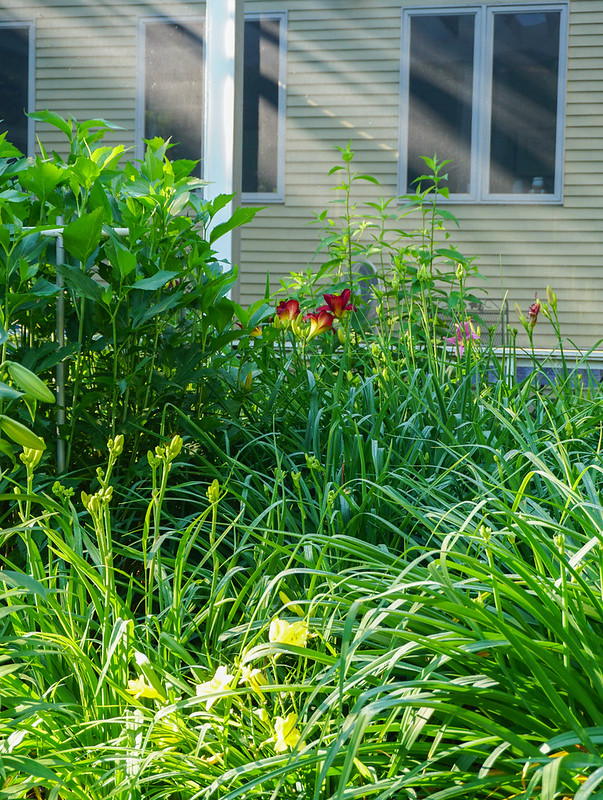
Near the bean pole, the seeds of the poppies and alyssum have done well. It's a delicate and lovely corner of the garden. But you have to wander leisurely through the beds to spot it in this wealth of farmette plantings. And of course, meandering slowly with both awe and rapture through the garden is what I miss, what we both miss so much right now.
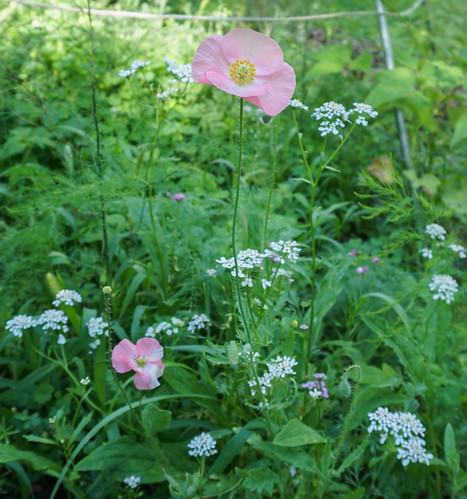
Breakfast. In the kitchen. Because of the noise. Broken record, eh?
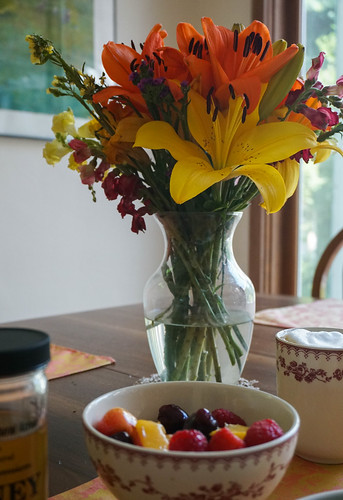
In the front bed, the day lilies are now mixing with the others flowers.

It's all so stunning! The bed is very long and I could never capture it in one photo. Here's the eastern end of it.
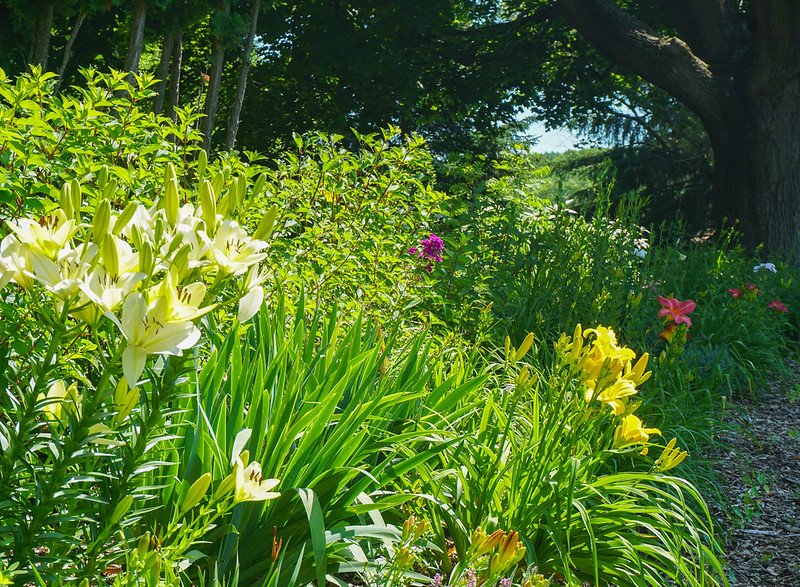
These are brief forays. We're not living a meandering summer.
And still, we come back to the big question: who is harmed if we spray, even with the most natural of natural products? It's a question that everyone who cares about our natural world has to ask.
We've come a long way since I first looked into a limited spraying of farmette land for my girl's wedding. Then, only one company offered any kind of analysis of who is harmed and what can be done to avoid damage. These days, mosquito control programs are much more sophisticated. We know how to protect butterflies and bees.
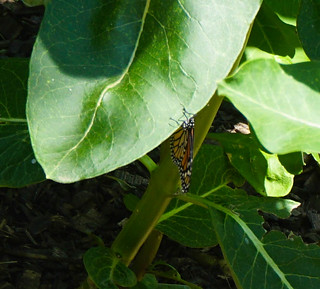
But Ed doesn't have to remind me that there is a lot that still needs to be understood.
Still, for us, our beloved farmette is under attack and we know that we probably cant grow old running to the car to avoid these seasonal pests that have reached record numbers this year (there is a researcher who does the count) because of the intense rains (violent weather episodes appear to be the new normal). There are only three paths before us: a magical revelation that indeed Ed's traps can make a difference, some degree of spraying, or we move and start from scratch.
All three are on the table, the remarkable beauty of the place notwithstanding.
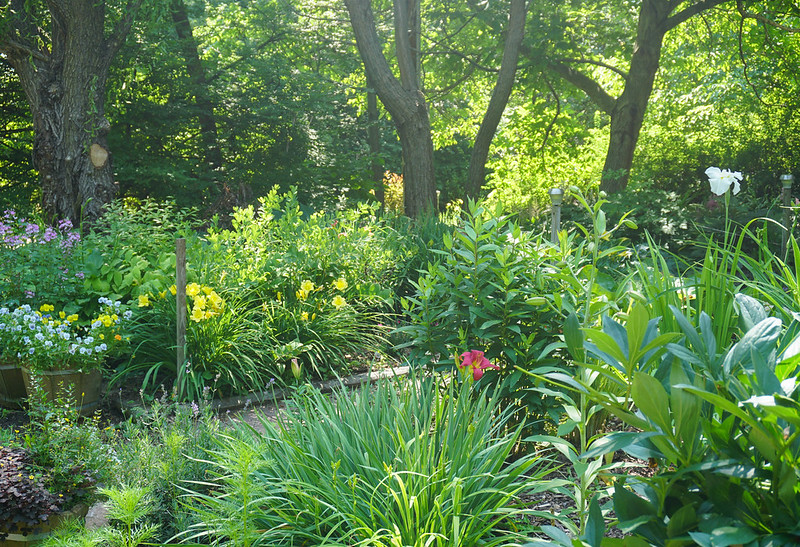
In the afternoon, I do three things:
I orchestrate the move of furniture into my mom's apartment (she'll be moving in herself in less than a week). I drink coffee at Ancora Coffee shop, and I watch Snowdrop dance.
The move offers no photos. It's a move, for goodness sake! We're moving stuff around, I'm anxiously studying the time as I'm paying the moving guys by the hour, and while all this is taking place, the building crew is in the apartment, replacing appliances and installing plumbing. In other words, chaos.
Ancora -- that's another story. I take several photos of my moment in this outdoor coffee shop just because it reminds me of another life -- a time when sitting in a cafe, sometimes with Ed, sometimes alone, was what I did and now I never ever do it. (I dug my own cafe grave when I purchased a Nespresso machine some eight years back. Now, it never seems worth the money to pay for coffee that is not a whole lot better than what I make at home. And, of course, the grandkids came and and the leisure moments flew away with the dandelion puffs of May.)
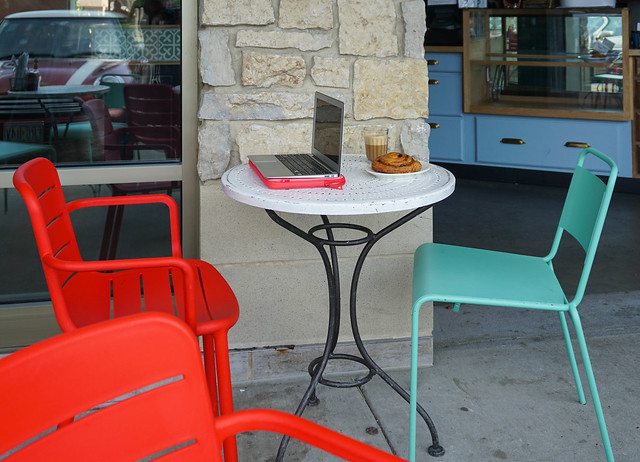
Finally, let's take a peek at Snowdrop's dance class.
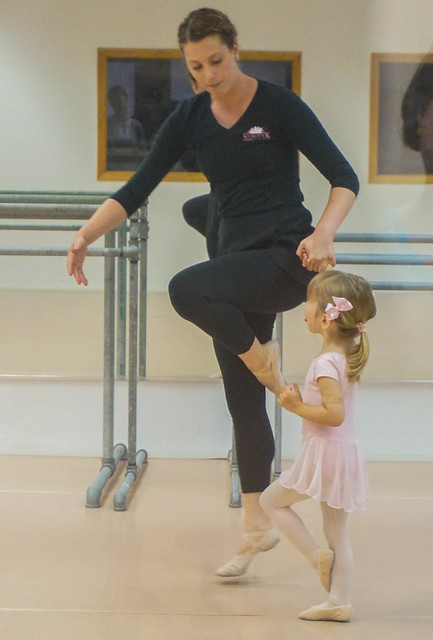
(They're acting out some portion of Little Mermaid.)

I'll end with that smile of hers. The world may crumble, but if there is a child's smile at the end of the day, then it isn't a total crumble. You can find the foundation. You can rebuild.


No comments:
Post a Comment
Note: Only a member of this blog may post a comment.